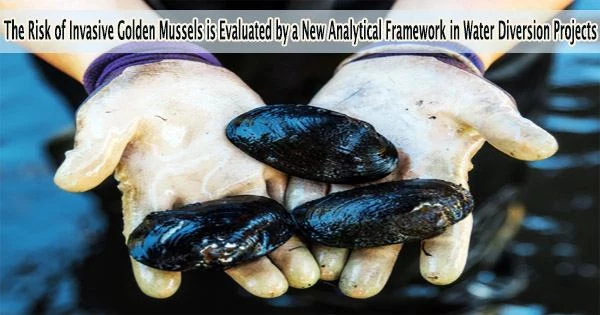Water diversion operations unintentionally encourage the spread of invasive aquatic species like the golden mussel despite being intended to fix uneven water distribution. This substrate-clinging, quickly reproducing mussel creates biofouling, which harms buildings and the quality of the water while causing socioeconomic and ecological problems.
However, it is still not quite obvious how environmental conditions support this invasion, calling for additional study.
In a study published in the journal Environmental Science and Ecotechnology, researchers from Tsinghua University, utilized logistic regression and multiclass classification models to shed light on the environmental influence on the golden mussel’s occurrence probability and reproductive density.
This research project identified significant environmental concerns for biofouling, including total nitrogen, ammonia nitrogen, water temperature, pH, and velocity. The study revealed that while ideal water temperature promotes mussel reproduction, increased total nitrogen levels inhibit it.
Ammonia nitrogen and total nitrogen showed a negative link with the occurrence probability across all larval stages, underlining their significance for larval survival. Additionally, appropriate velocity and pH levels emerged as important for maintaining moderate larvae density.
This research introduces an innovative, quantifiable framework for evaluating the establishment risks linked to invasive mussels.
This innovative approach combines logistic regression to determine the likelihood of a larval appearance and multiclass classification models to forecast the overall larval density category.
This strategy supports the prevention and management of golden mussel biofouling by enabling quick, cost-effective risk assessment through the vigilant monitoring of critical environmental variables.
The implications of these findings extend beyond China, resonating with over 200 water diversion projects globally. This recently developed model’s proactive application and ongoing monitoring could significantly improve the control of invasive species within water diversion programs, minimizing the negative effects of biofouling on our water systems and infrastructure.
This research makes major contributions to our knowledge of the interactions between invasive species and the environment, providing us with crucial tools for managing and reducing the negative consequences of biofouling in large-scale water projects.
The research team is hopeful that the knowledge gained from this study may open the door to the creation of more effective tactics to stop the spread of invasive species like golden mussels on a worldwide scale.
















